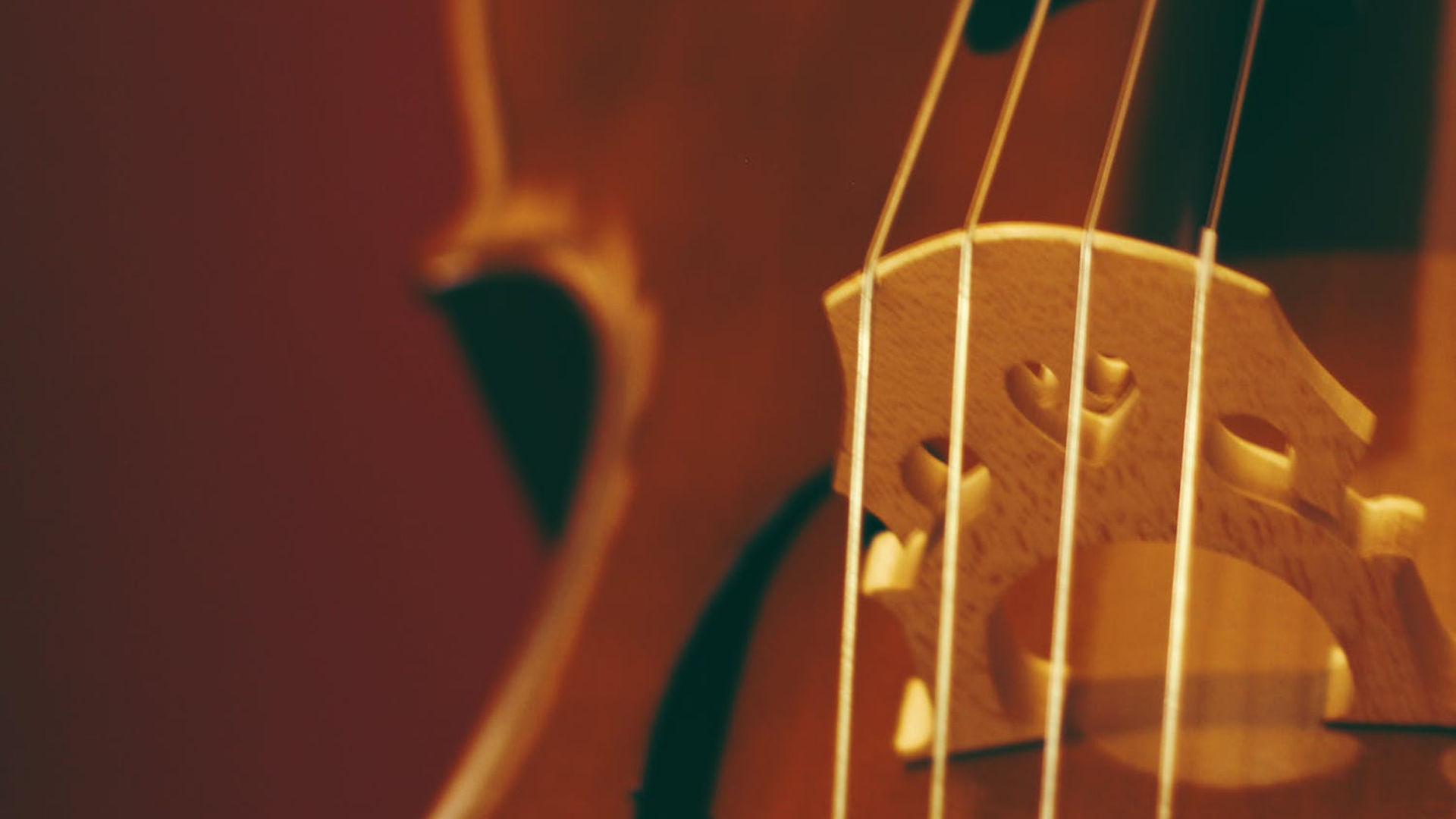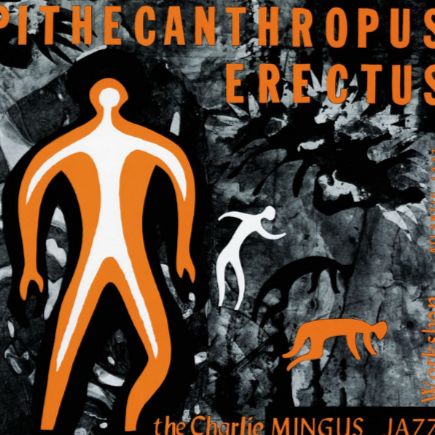Charles Mingus, l’âme insurgée du jazz moderne
Figure monumentale du jazz du XXe siècle, Charles Mingus fut à la fois contrebassiste, pianiste, compositeur et chef d’orchestre d’une intensité rare. Artiste total, il incarna la fusion entre virtuosité instrumentale, liberté créatrice et engagement social. Né à Nogales (Arizona) et élevé à Watts, dans la banlieue noire de Los Angeles, Charles Mingus découvre la musique à la Holiness Church, où les chants spirituels et la ferveur collective éveillent en lui un sens profond du rythme et de la communion.
Son parcours musical débute au trombone puis au violoncelle, avant qu’un ami, lui rappelant les préjugés raciaux attachés à cet instrument, ne l’oriente vers la contrebasse. Ce choix marque un tournant décisif: Mingus y trouve son langage. Élève du contrebassiste Red Callender, il développe une technique puissante et expressive, capable de faire chanter, rugir ou pleurer l’instrument.
Après un premier emploi auprès du batteur Lee Young en 1940 et des collaborations avec Barney Bigard et Louis Armstrong, il rencontre le vibraphoniste Red Norvo, avec qui il forme un trio novateur. En 1947, Charles Mingus s’installe à New York, au cœur du bouillonnement du bebop. Charlie Parker, impressionné par sa personnalité musicale, l’encourage à poursuivre dans sa voie. En 1952, Mingus fonde sa propre maison de disques, Debut Records, symbole de son indépendance artistique et dont le premier enregistrement, Jazz at Massey Hall (1953), capté à Toronto avec Parker, Dizzy Gillespie, Bud Powell et Max Roach, demeure une référence absolue — une sorte de testament du bebop.
C’est en 1956, avec Pithecanthropus Erectus, que Charles Mingus impose son style visionnaire. Cet album manifeste, alliant structure narrative, dissonances expressives et improvisation collective, annonce une ère nouvelle. S’ensuivent une série d’œuvres majeures: The Clown (1957), Mingus Ah Um (1959), Blues & Roots (1959) et Mingus at Antibes (1960), avant l’aboutissement orchestral de The Black Saint and the Sinner Lady (1963), considéré comme son chef-d’œuvre.
Musicien inclassable, Charles Mingus combine la ferveur du gospel, la liberté du free jazz, la vigueur du hard bop et la sophistication du classique. Sa musique est une lutte, une prière et un cri: elle reflète ses combats intérieurs autant que son engagement contre le racisme et l’injustice. Chef d’orchestre exigeant, parfois colérique, mais profondément humaniste, il poussait ses musiciens à se dépasser, à dialoguer, à improviser ensemble comme un organisme vivant.
Charles Mingus, el alma insurgente del jazz moderno
Figura monumental del jazz del siglo XX, Charles Mingus fue a la vez contrabajista, pianista, compositor y director de una intensidad poco común. Artista total, encarnó la fusión entre virtuosismo instrumental, libertad creativa y compromiso social. Nacido en Nogales (Arizona) y criado en Watts, en el barrio afroamericano de Los Ángeles, Mingus descubrió la música en la Holiness Church, donde los cantos espirituales y la energía colectiva despertaron en él un profundo sentido del ritmo y la comunión.
Su trayectoria musical comenzó con el trombón y luego con el violonchelo, hasta que un amigo, recordándole los prejuicios raciales asociados a ese instrumento, lo orientó hacia el contrabajo. Esta decisión marcaría un giro decisivo: Mingus encontró allí su verdadera voz. Alumno del contrabajista Red Callender, desarrolló una técnica poderosa y expresiva, capaz de hacer cantar, rugir o llorar al instrumento.
Tras un primer empleo con el baterista Lee Young en 1940 y colaboraciones con Barney Bigard y Louis Armstrong, conoció al vibrafonista Red Norvo, con quien formó un trío innovador. En 1947, Mingus se instaló en Nueva York, en el corazón del efervescente movimiento bebop. Charlie Parker, impresionado por su musicalidad, lo animó a seguir su propio camino. En 1952 fundó su propio sello, Debut Records, símbolo de su independencia artística, cuyo primer lanzamiento, Jazz at Massey Hall (1953), grabado en Toronto junto a Parker, Dizzy Gillespie, Bud Powell y Max Roach, sigue siendo una referencia absoluta, casi un testamento del bebop.
En 1956, con Pithecanthropus Erectus, Mingus impuso su estilo visionario. Este álbum-manifiesto, que combina estructura narrativa, disonancias expresivas e improvisación colectiva, anuncia una nueva era. Le siguieron obras maestras como The Clown (1957), Mingus Ah Um (1959), Blues & Roots (1959) y Mingus at Antibes (1960), culminando con la monumental The Black Saint and the Sinner Lady (1963), considerada su obra cumbre.
Músico inclasificable, Charles Mingus combinó la espiritualidad del gospel, la libertad del free jazz, la fuerza del hard bop y la sofisticación de la música clásica. Su obra es una lucha, una oración y un grito: refleja tanto sus batallas interiores como su compromiso contra el racismo y la injusticia. Director exigente, a veces colérico pero profundamente humanista, empujaba a sus músicos a superarse, a dialogar y a improvisar como un solo organismo vivo.
Charles Mingus, l’anima ribelle del jazz moderno
Figura monumentale del jazz del XX secolo, Charles Mingus fu allo stesso tempo contrabbassista, pianista, compositore e direttore d’orchestra di straordinaria intensità. Artista totale, rappresentò la fusione tra virtuosismo strumentale, libertà creativa e impegno sociale. Nato a Nogales (Arizona) e cresciuto a Watts, nella comunità afroamericana di Los Angeles, Mingus scoprì la musica nella Holiness Church, dove i canti spirituali e la partecipazione collettiva risvegliarono in lui un profondo senso del ritmo e della comunione.
Il suo percorso musicale iniziò con il trombone e poi con il violoncello, finché un amico — ricordandogli i pregiudizi razziali associati a quello strumento — lo indirizzò verso il contrabbasso. Questa scelta segnò una svolta decisiva: Mingus vi trovò il suo linguaggio. Allievo del contrabbassista Red Callender, sviluppò una tecnica potente ed espressiva, capace di far cantare, ruggire o piangere lo strumento.
Dopo un primo impiego con il batterista Lee Young nel 1940 e collaborazioni con Barney Bigard e Louis Armstrong, incontrò il vibrafonista Red Norvo, con cui formò un trio innovativo. Nel 1947 si trasferì a New York, nel cuore del movimento bebop. Charlie Parker, colpito dalla sua personalità musicale, lo incoraggiò a proseguire per la propria strada. Nel 1952 Mingus fondò la sua etichetta, Debut Records, simbolo della sua indipendenza artistica, il cui primo disco, Jazz at Massey Hall (1953), registrato a Toronto con Parker, Dizzy Gillespie, Bud Powell e Max Roach, è considerato una pietra miliare del bebop.
Nel 1956, con Pithecanthropus Erectus, Mingus impose il suo stile visionario. Questo album-manifesto, che unisce struttura narrativa, dissonanze espressive e improvvisazione collettiva, segnò l’inizio di una nuova era. Seguono capolavori come The Clown (1957), Mingus Ah Um (1959), Blues & Roots (1959) e Mingus at Antibes (1960), fino alla maestosa The Black Saint and the Sinner Lady (1963), considerata la sua opera somma.
Musicista inclassificabile, Mingus unì la spiritualità del gospel, la libertà del free jazz, la forza del hard bop e la raffinatezza del linguaggio classico. La sua musica è una lotta, una preghiera e un grido: riflette i suoi conflitti interiori e il suo impegno contro il razzismo e l’ingiustizia. Direttore esigente, talvolta collerico ma profondamente umanista, spingeva i suoi musicisti a superarsi, a dialogare e a improvvisare come un unico organismo vivente.
Charles Mingus: the defiant soul of modern jazz
A towering figure of 20th-century jazz, Charles Mingus was a bassist, pianist, composer, and bandleader of extraordinary intensity. A complete artist, he embodied the fusion of instrumental virtuosity, creative freedom, and social commitment. Born in Nogales, Arizona, and raised in Watts, Los Angeles’s Black community, Mingus discovered music in the Holiness Church, where spirituals and communal fervor awakened his deep sense of rhythm and connection.
His musical path began with the trombone and later the cello, until a friend—reminding him of the racial prejudices tied to that instrument—encouraged him to turn to the double bass. The choice proved decisive: Mingus found his true voice. A student of bassist Red Callender, he developed a powerful, expressive technique capable of making the instrument sing, roar, or weep.
After an early job with drummer Lee Young in 1940 and collaborations with Barney Bigard and Louis Armstrong, he met vibraphonist Red Norvo, forming an innovative trio. In 1947, Mingus moved to New York, the epicenter of the bebop revolution. Charlie Parker, struck by his musical presence, urged him to continue forging his path. In 1952, Mingus founded his own label, Debut Records, a symbol of artistic independence. Its first release, Jazz at Massey Hall (1953)—recorded in Toronto with Parker, Dizzy Gillespie, Bud Powell, and Max Roach—remains a cornerstone of bebop history.
In 1956, Mingus asserted his visionary voice with Pithecanthropus Erectus, a manifesto blending narrative form, expressive dissonance, and collective improvisation that heralded a new era. This was followed by masterpieces such as The Clown (1957), Mingus Ah Um (1959), Blues & Roots (1959), and Mingus at Antibes (1960), culminating in the orchestral masterpiece The Black Saint and the Sinner Lady (1963), widely considered his magnum opus.
An unclassifiable artist, Mingus fused the passion of gospel, the freedom of free jazz, the drive of hard bop, and the sophistication of classical music. His work was a struggle, a prayer, and a cry—reflecting his inner conflicts as well as his fight against racism and injustice. A demanding, often fiery yet deeply humanistic leader, he pushed his musicians to reach beyond themselves, to converse and improvise together as a living, breathing organism.



